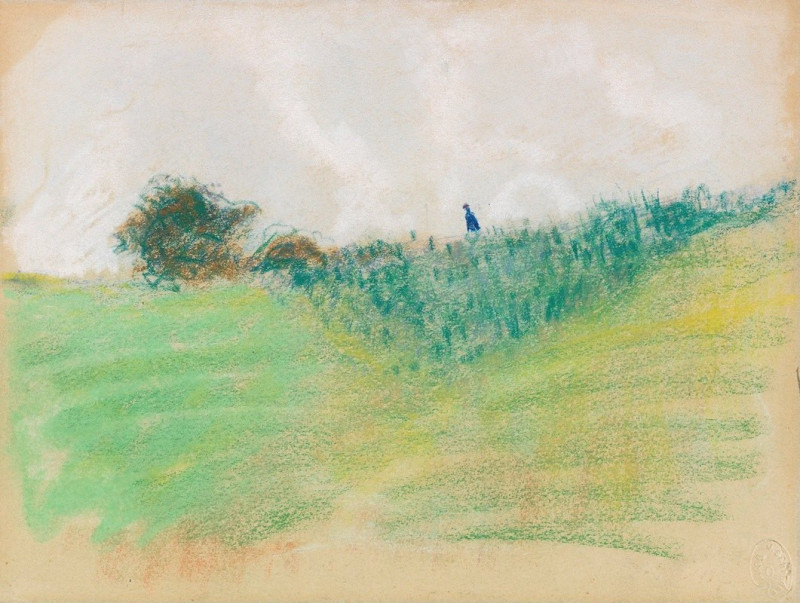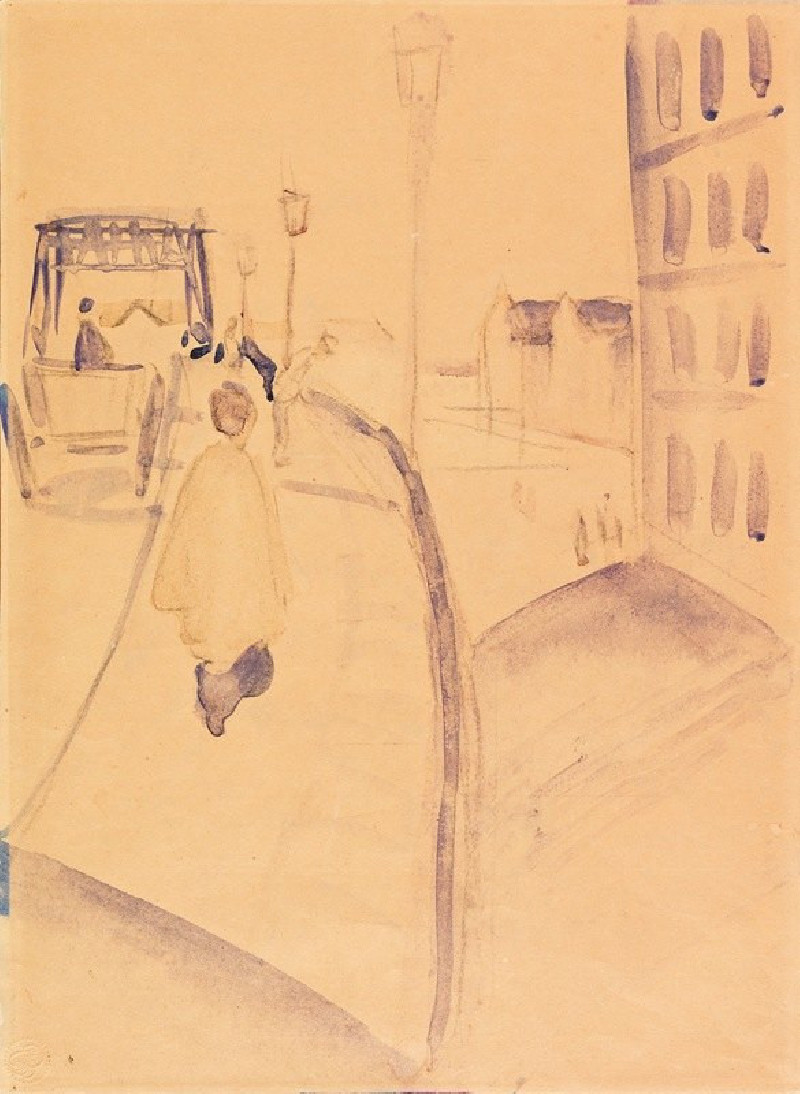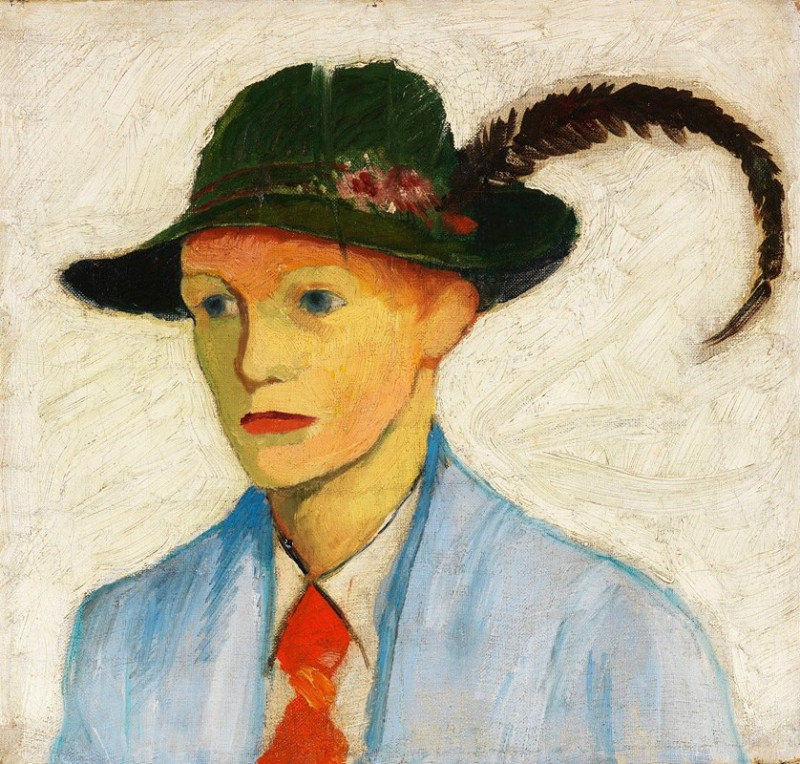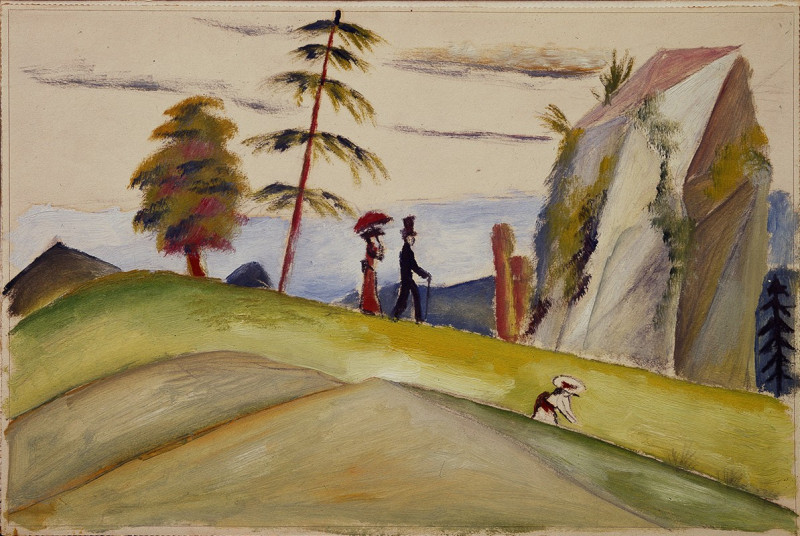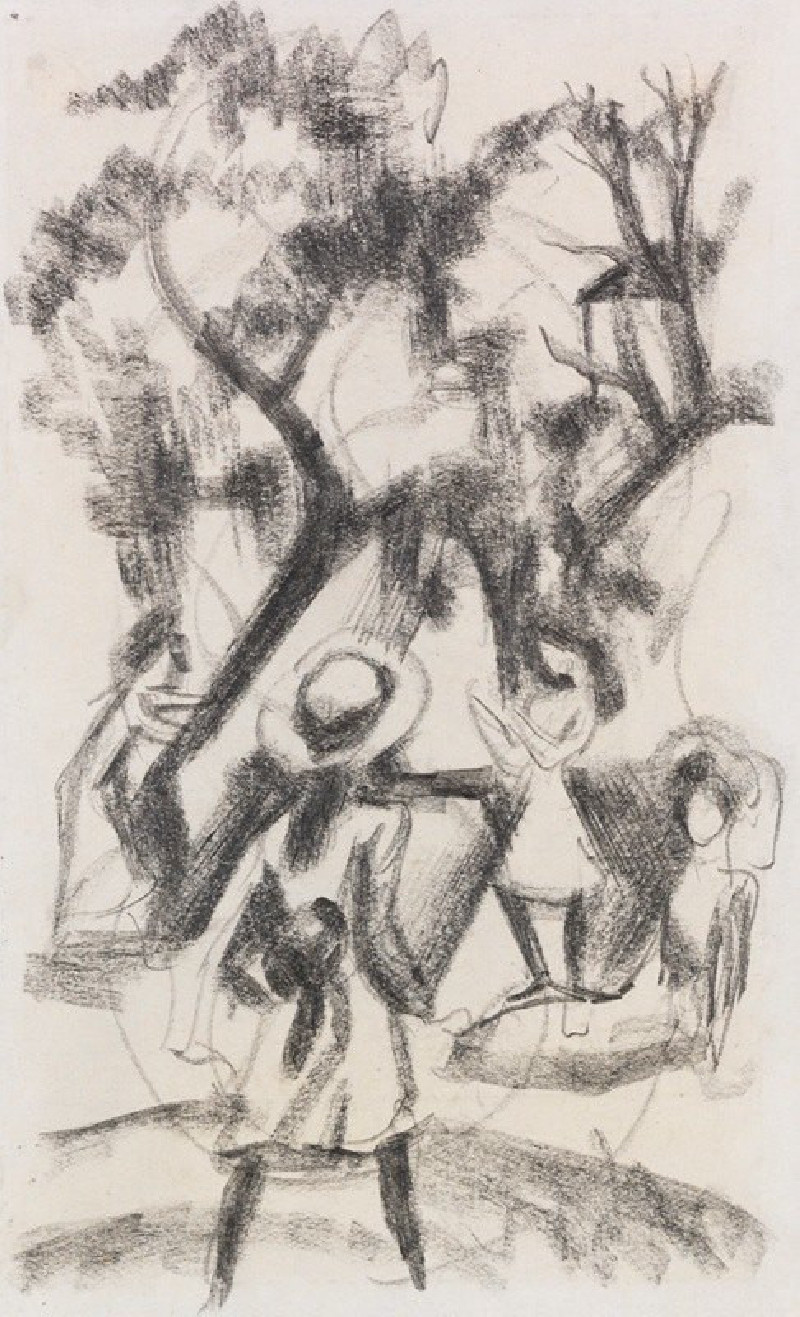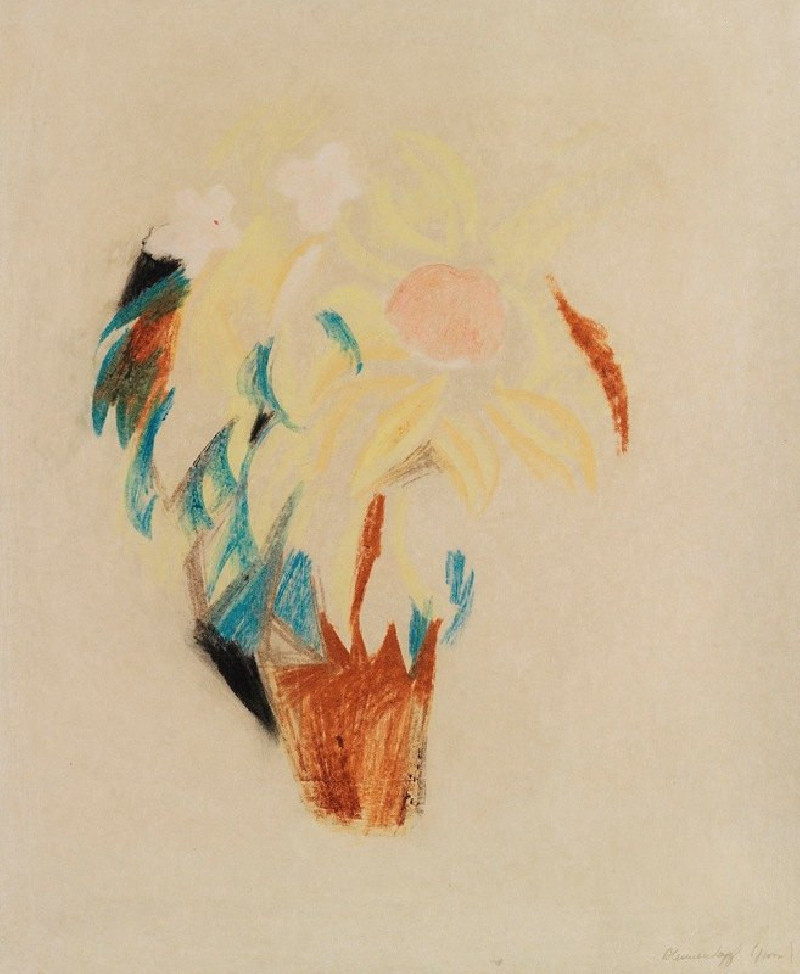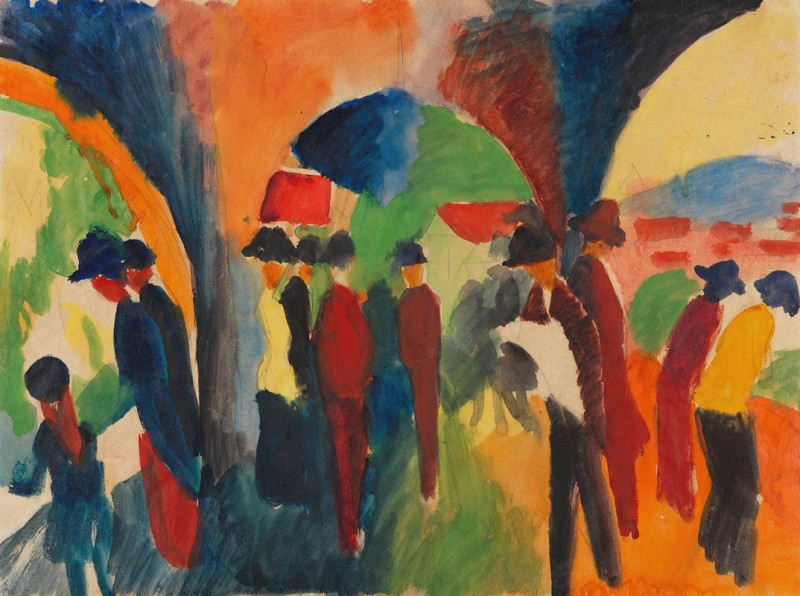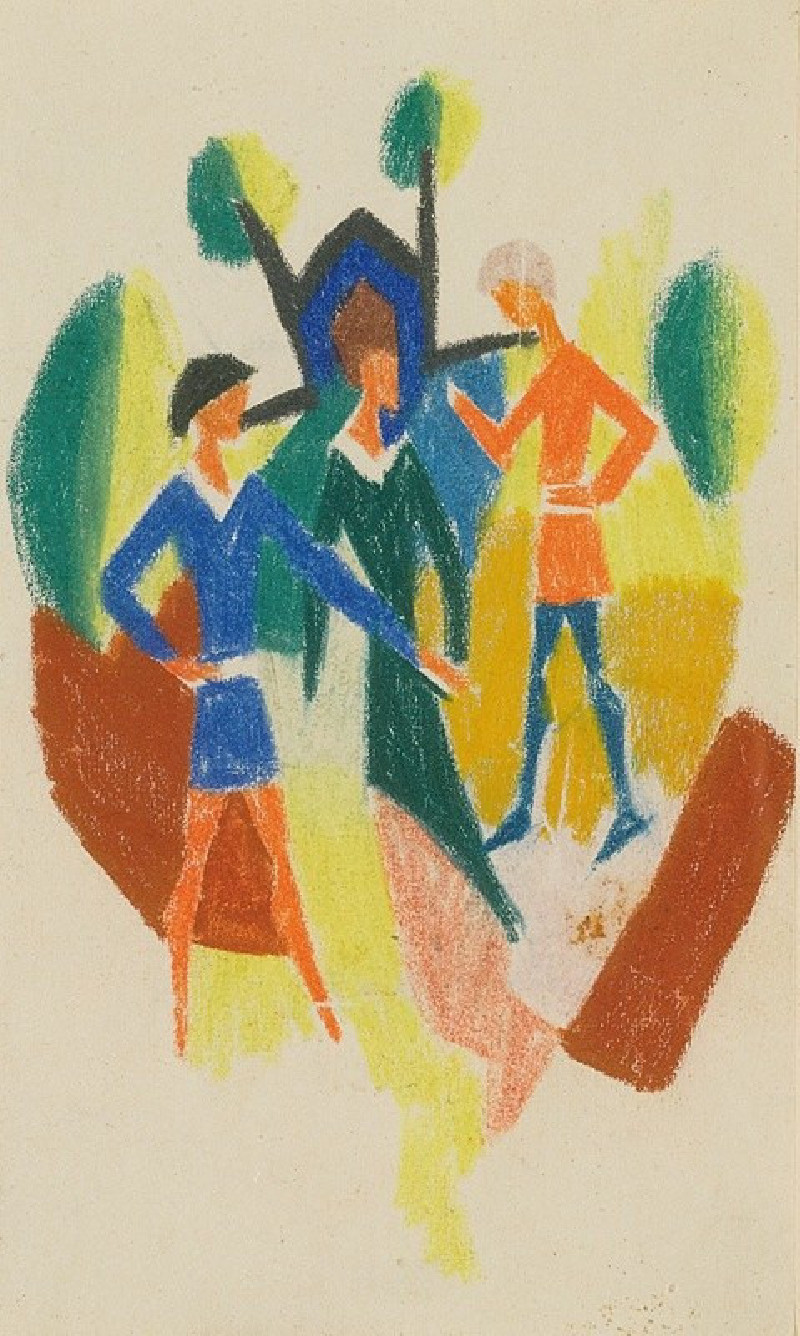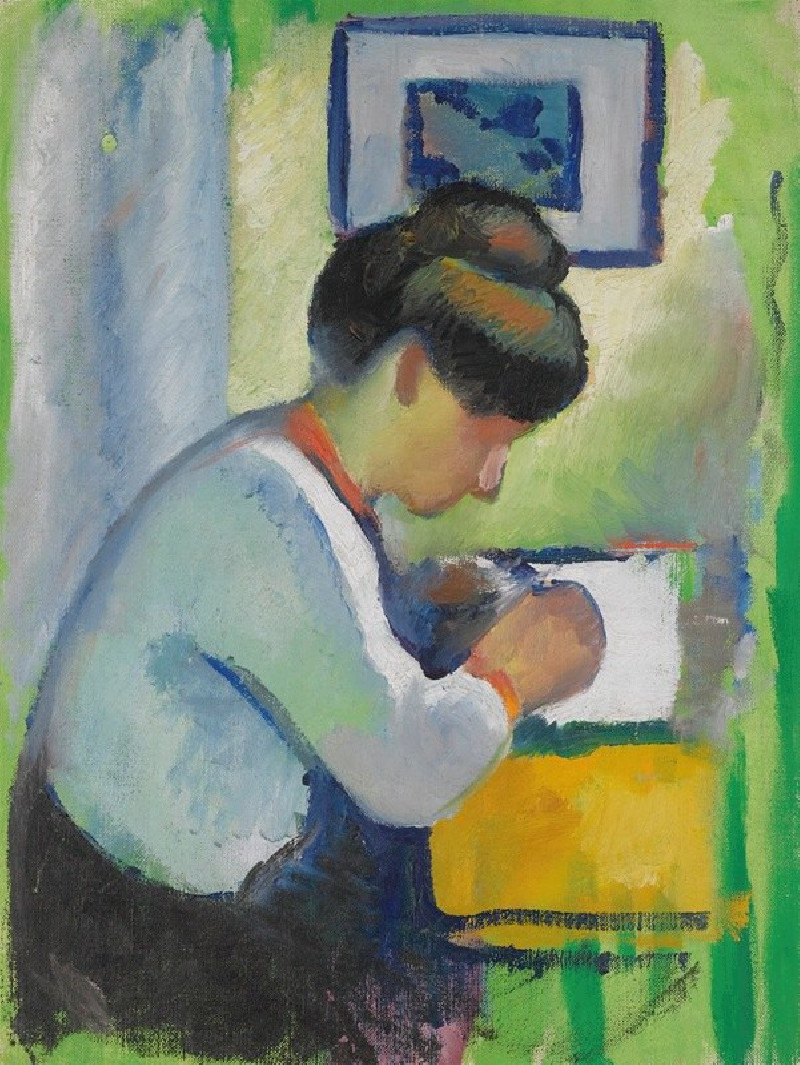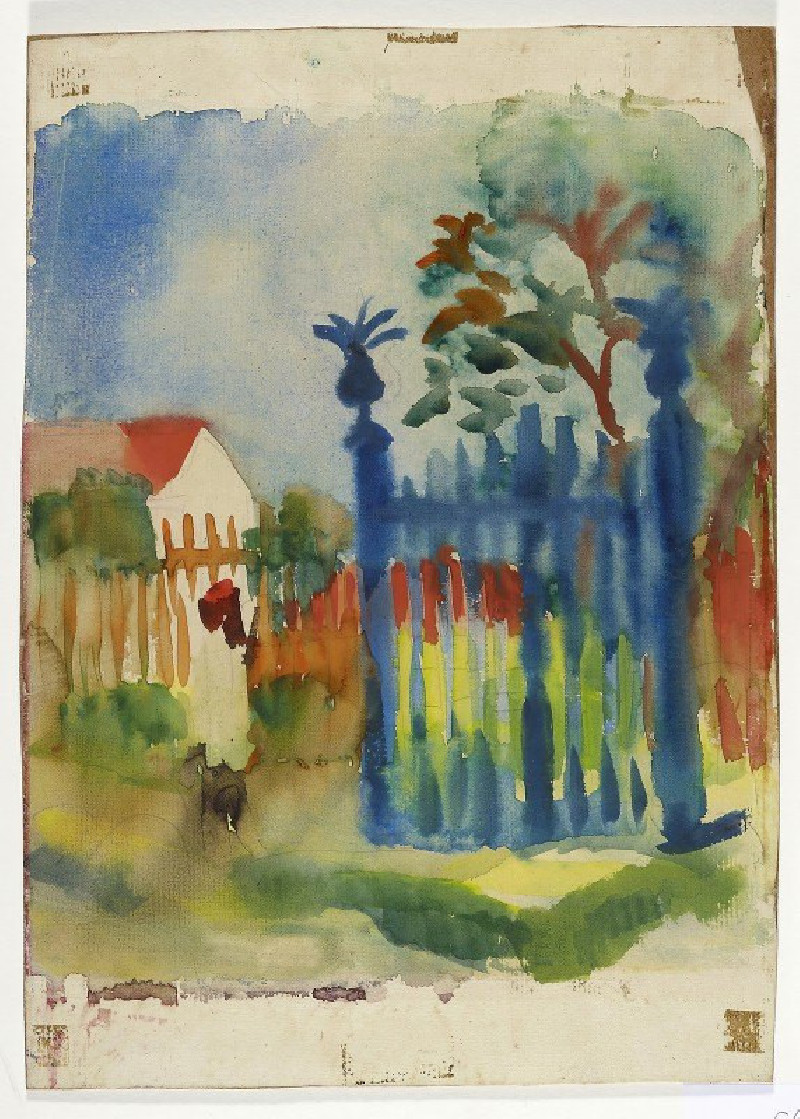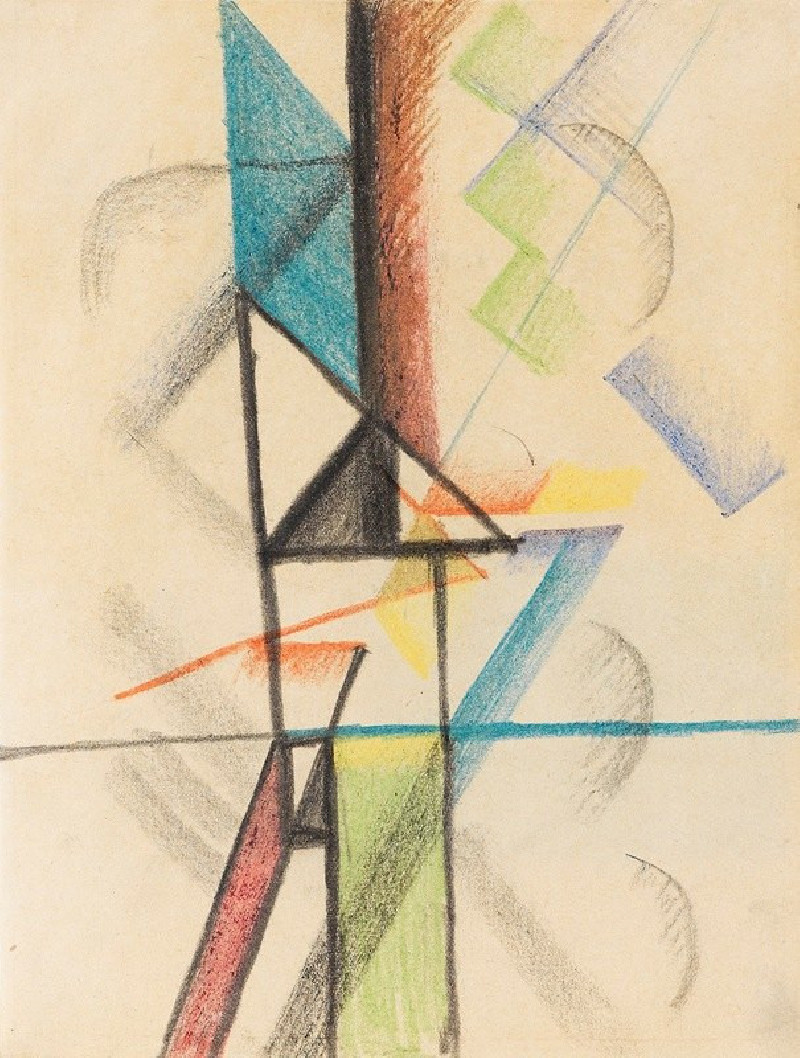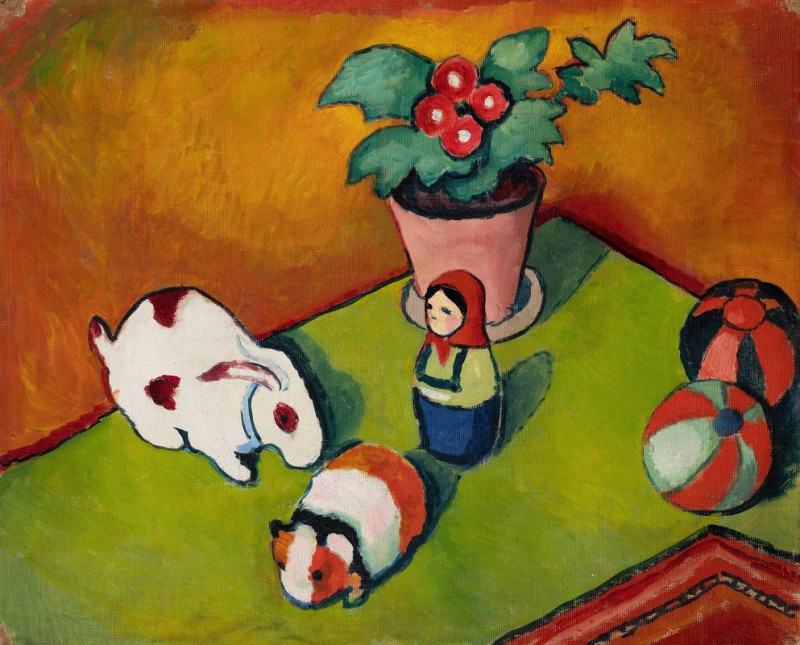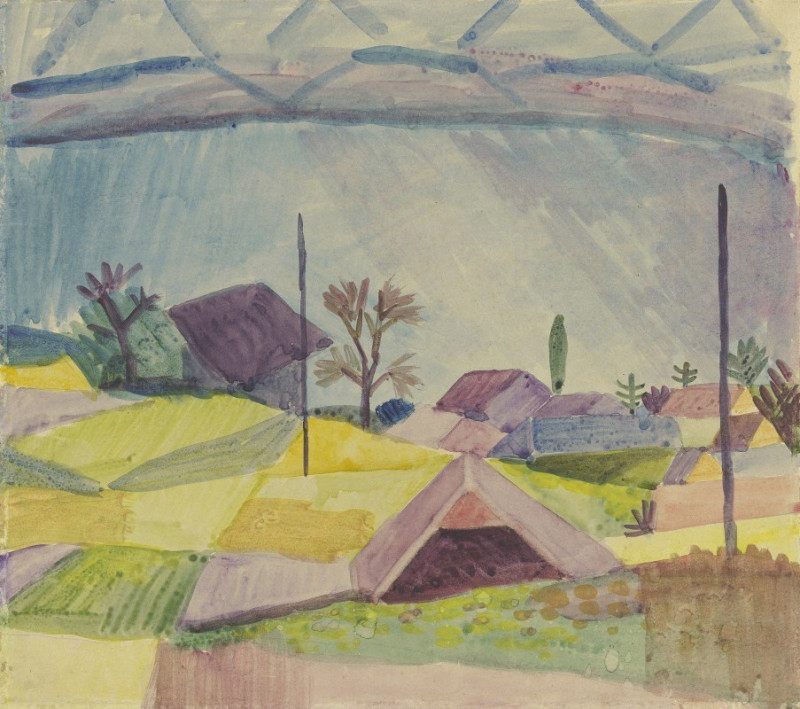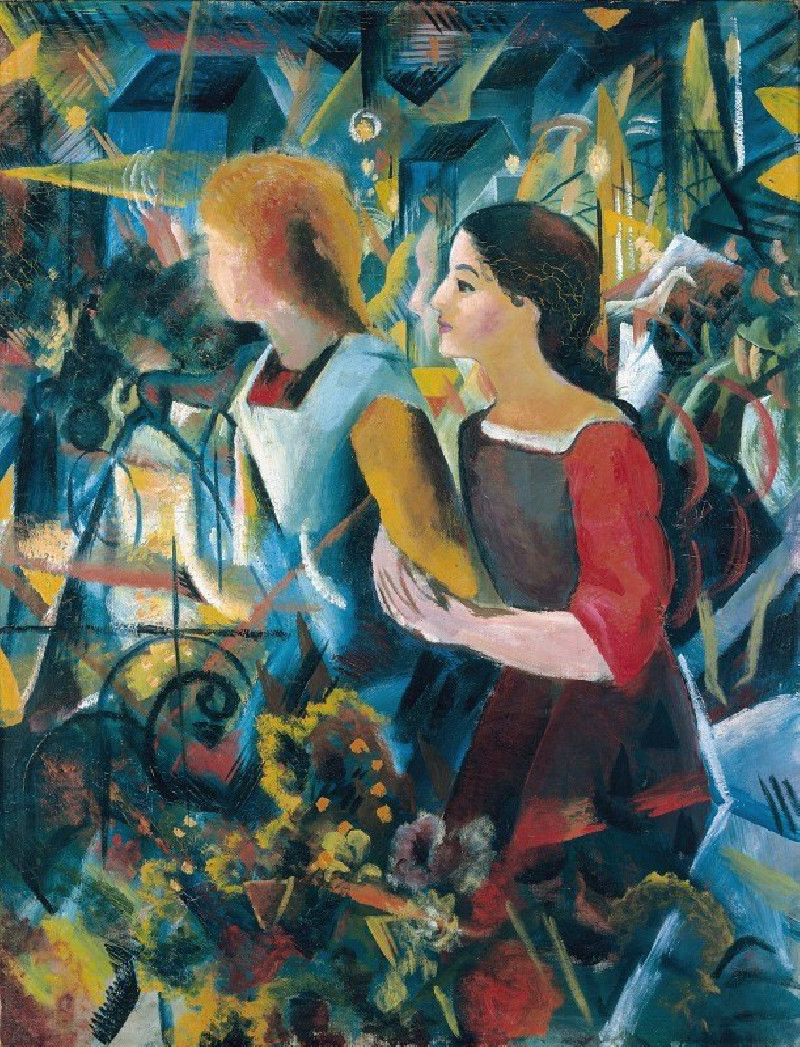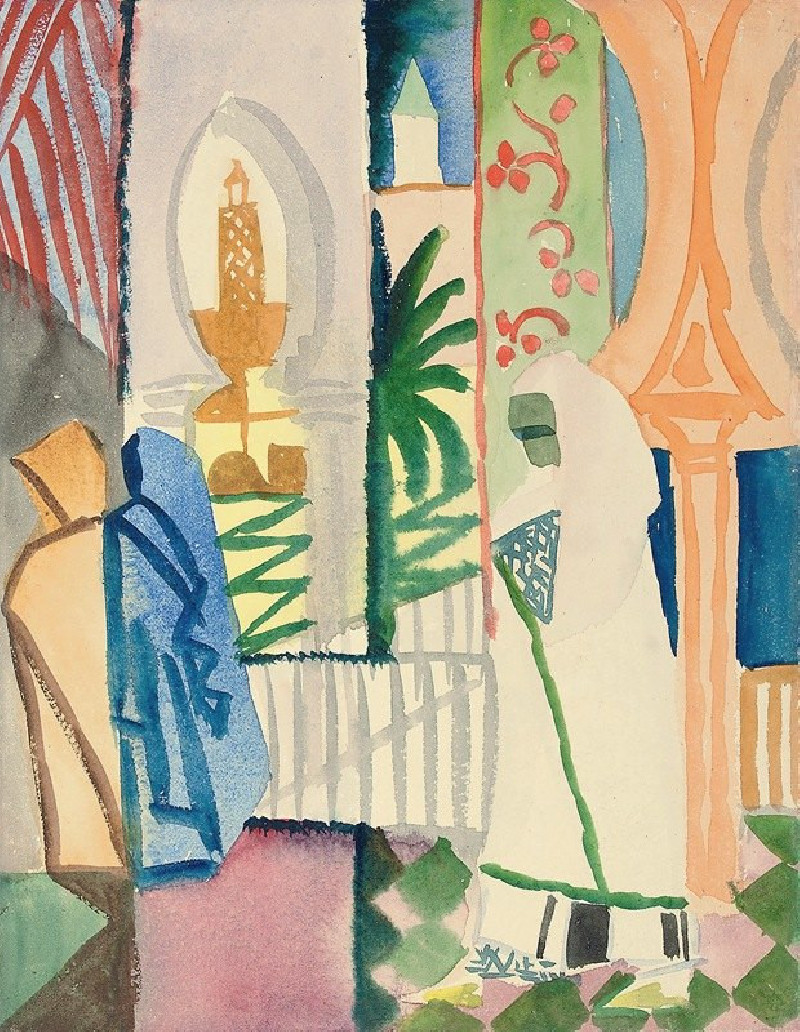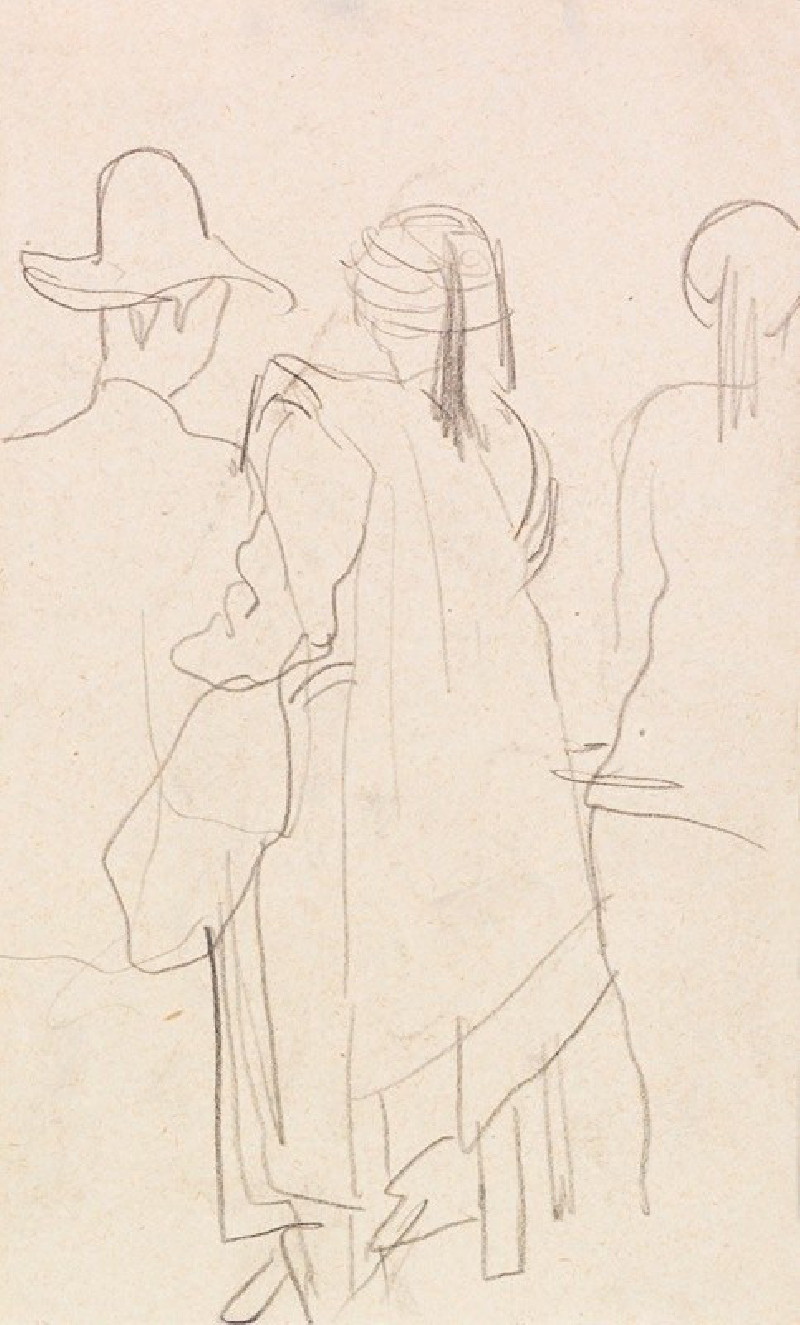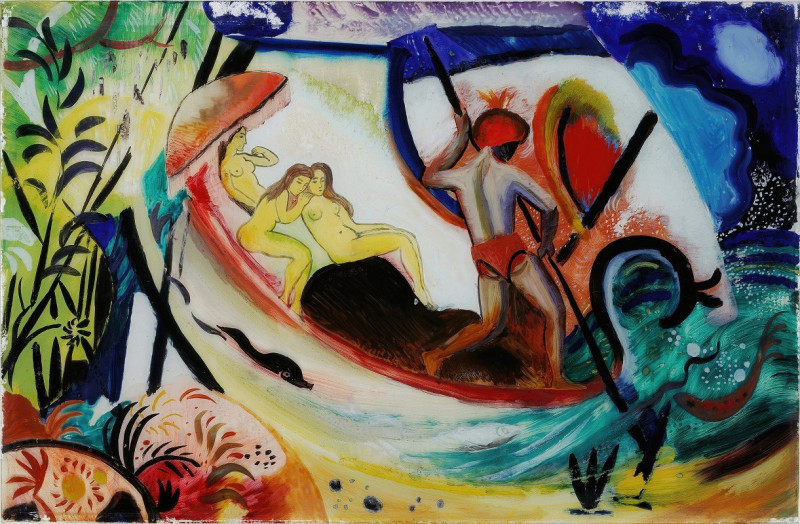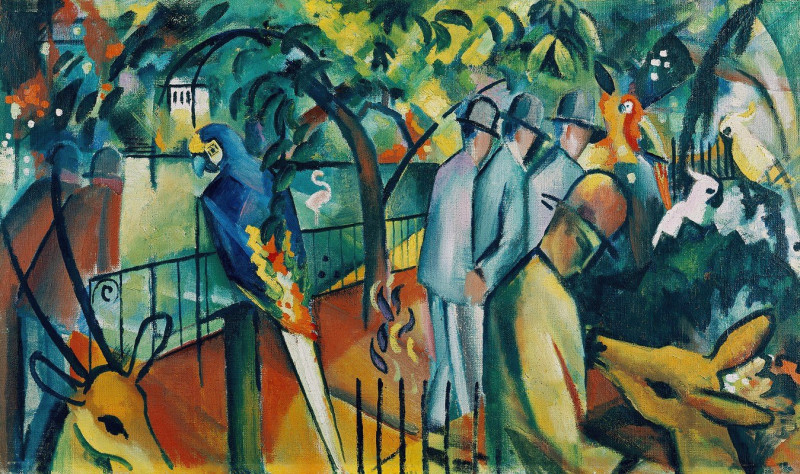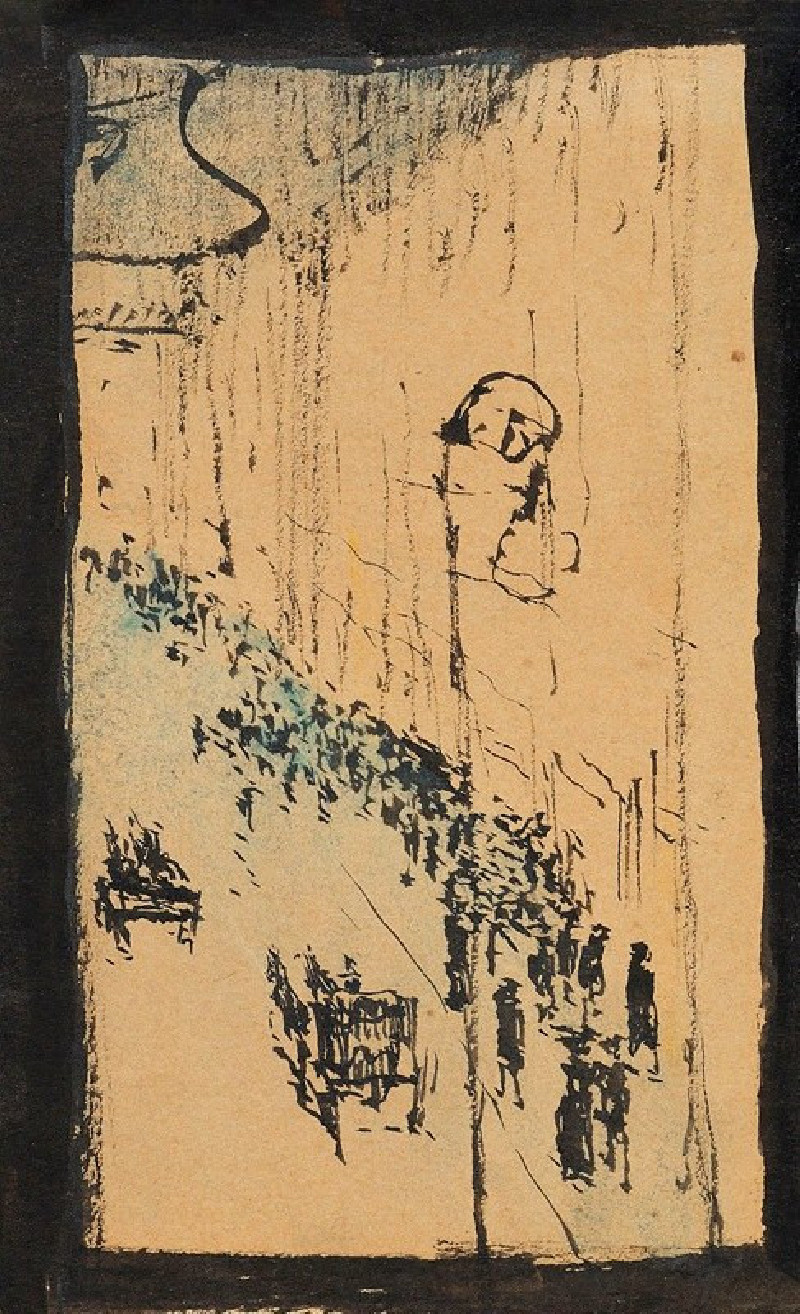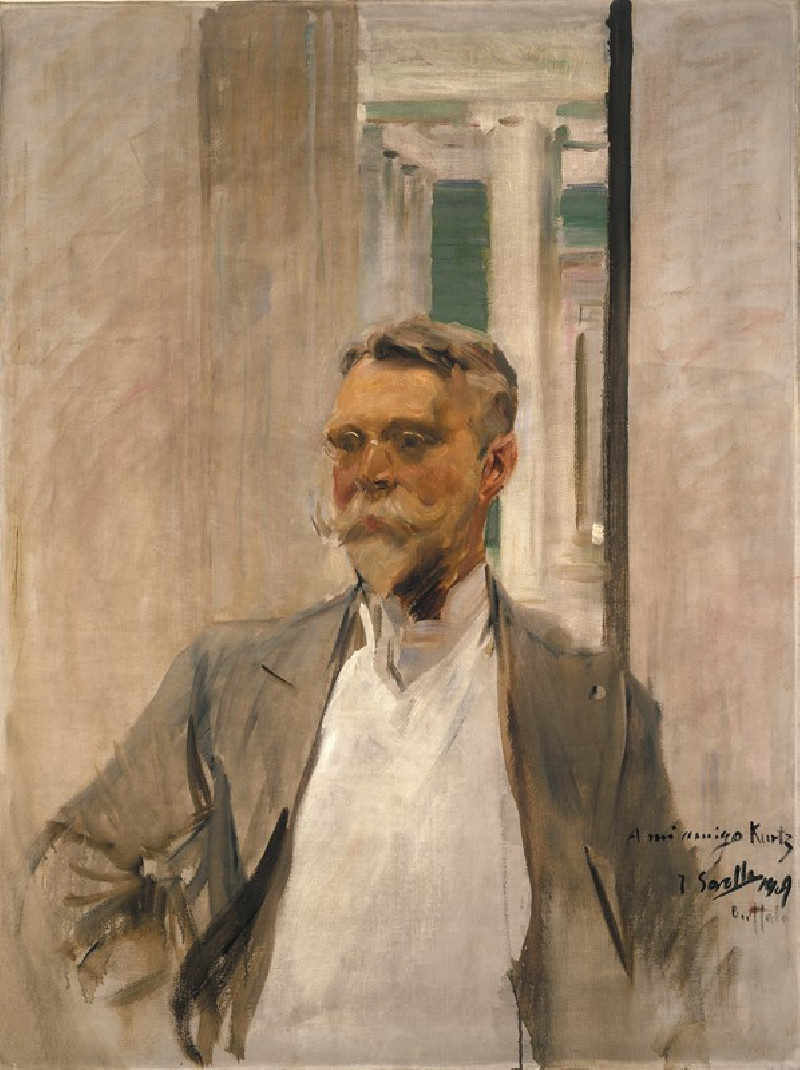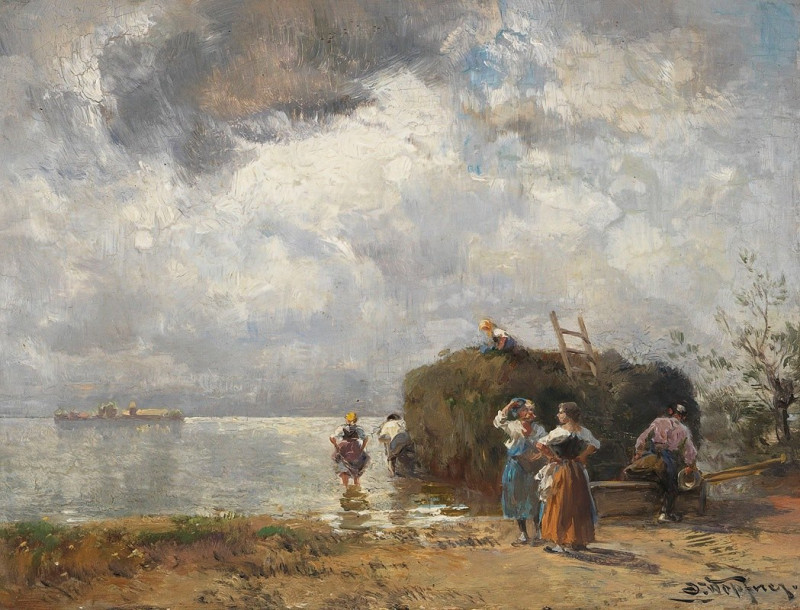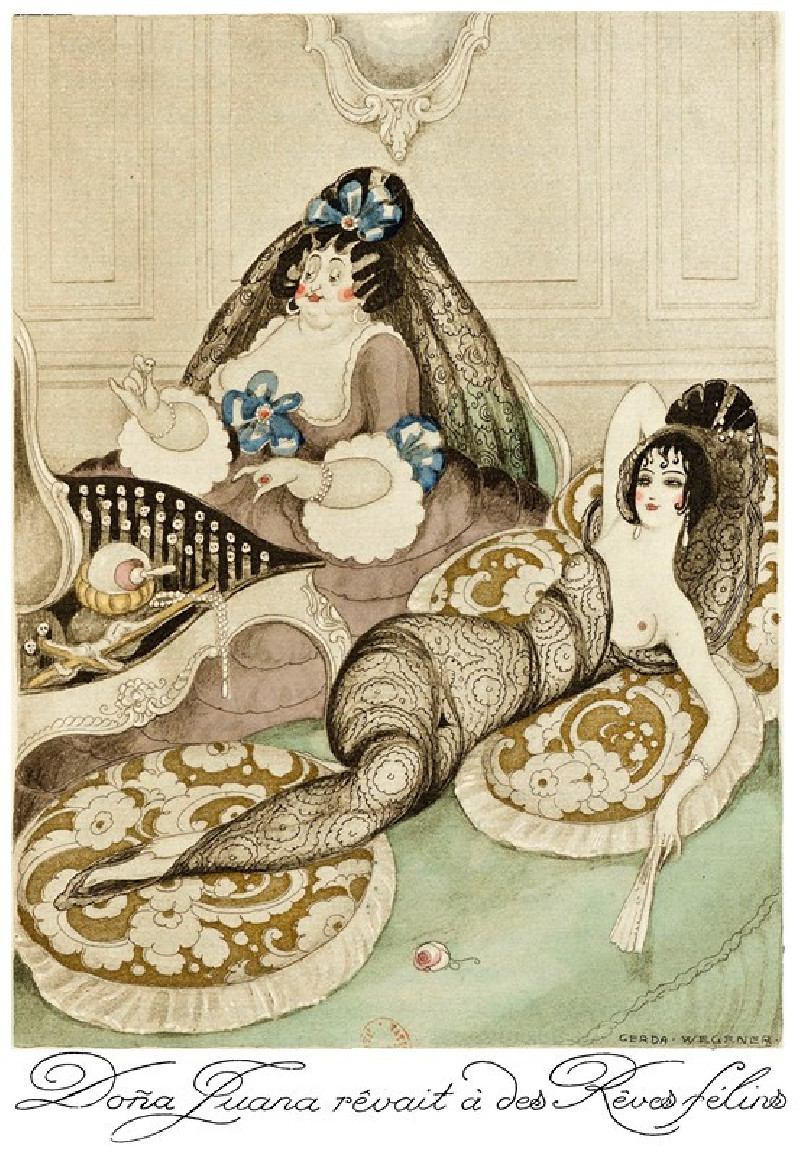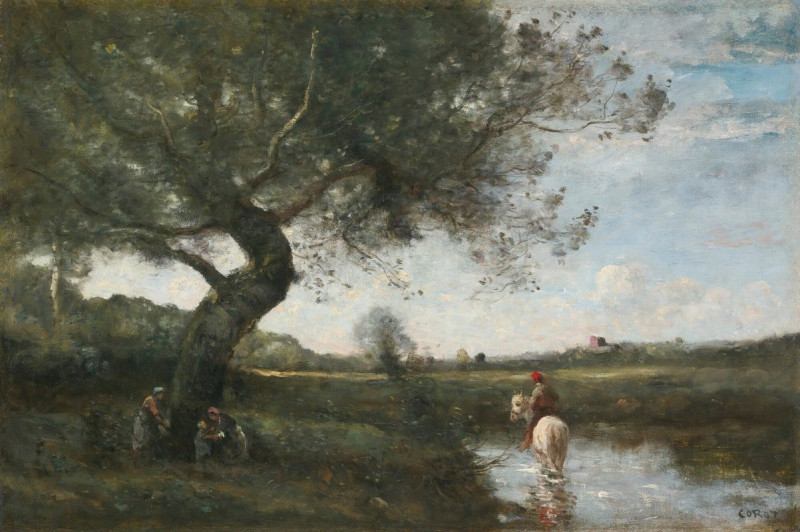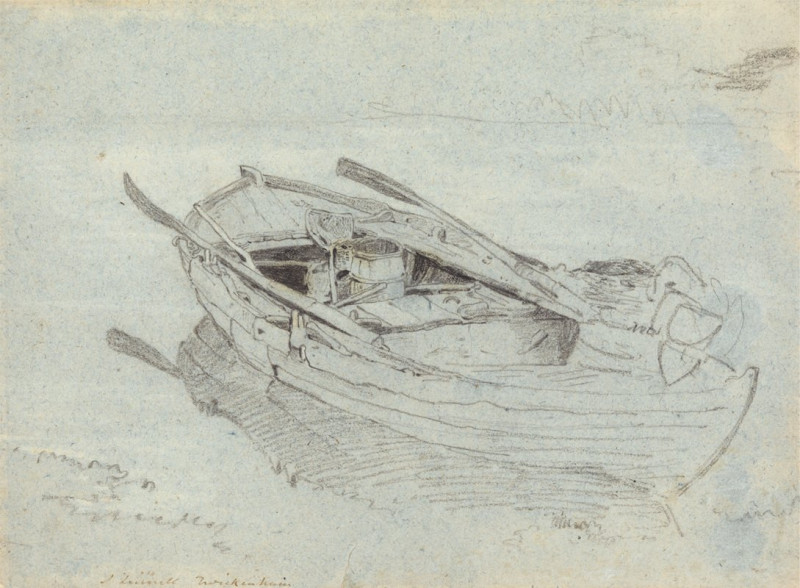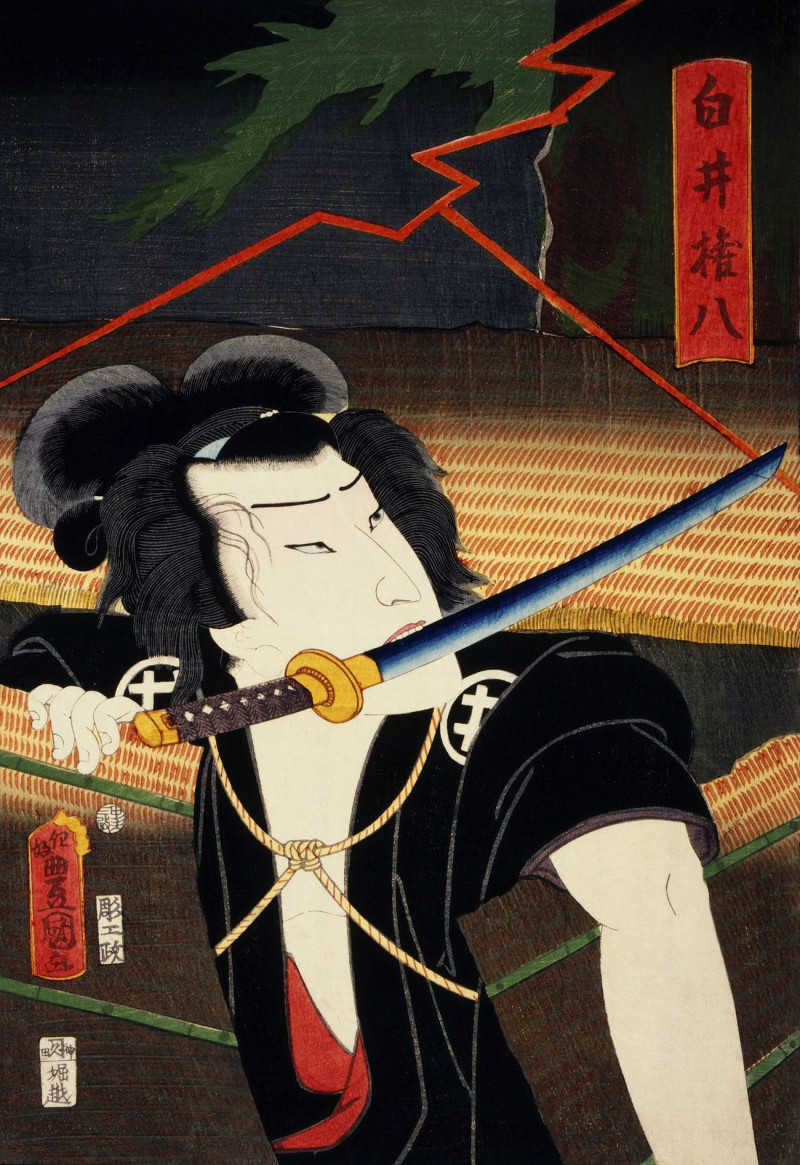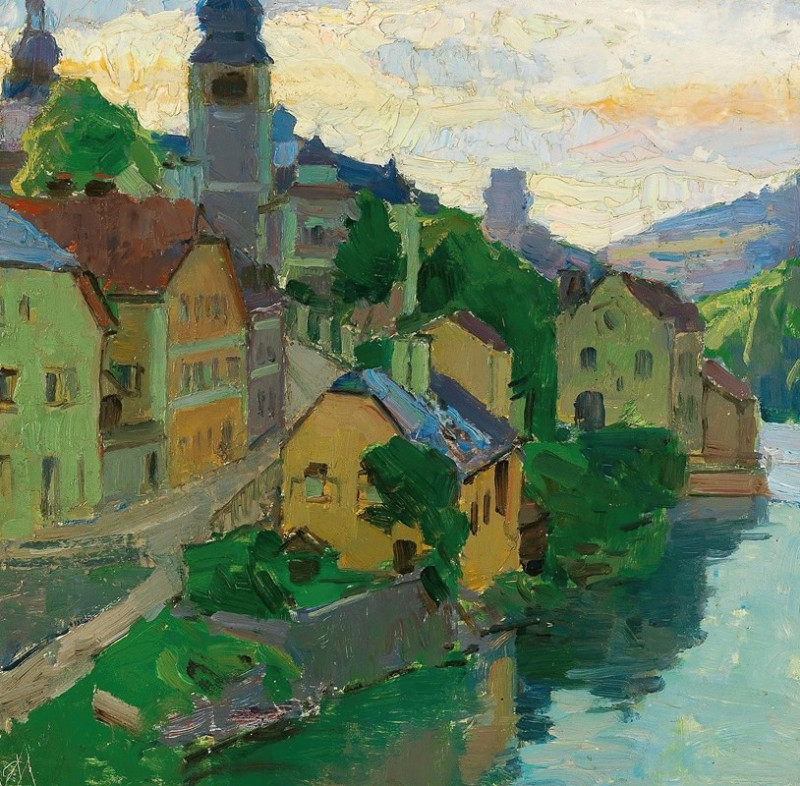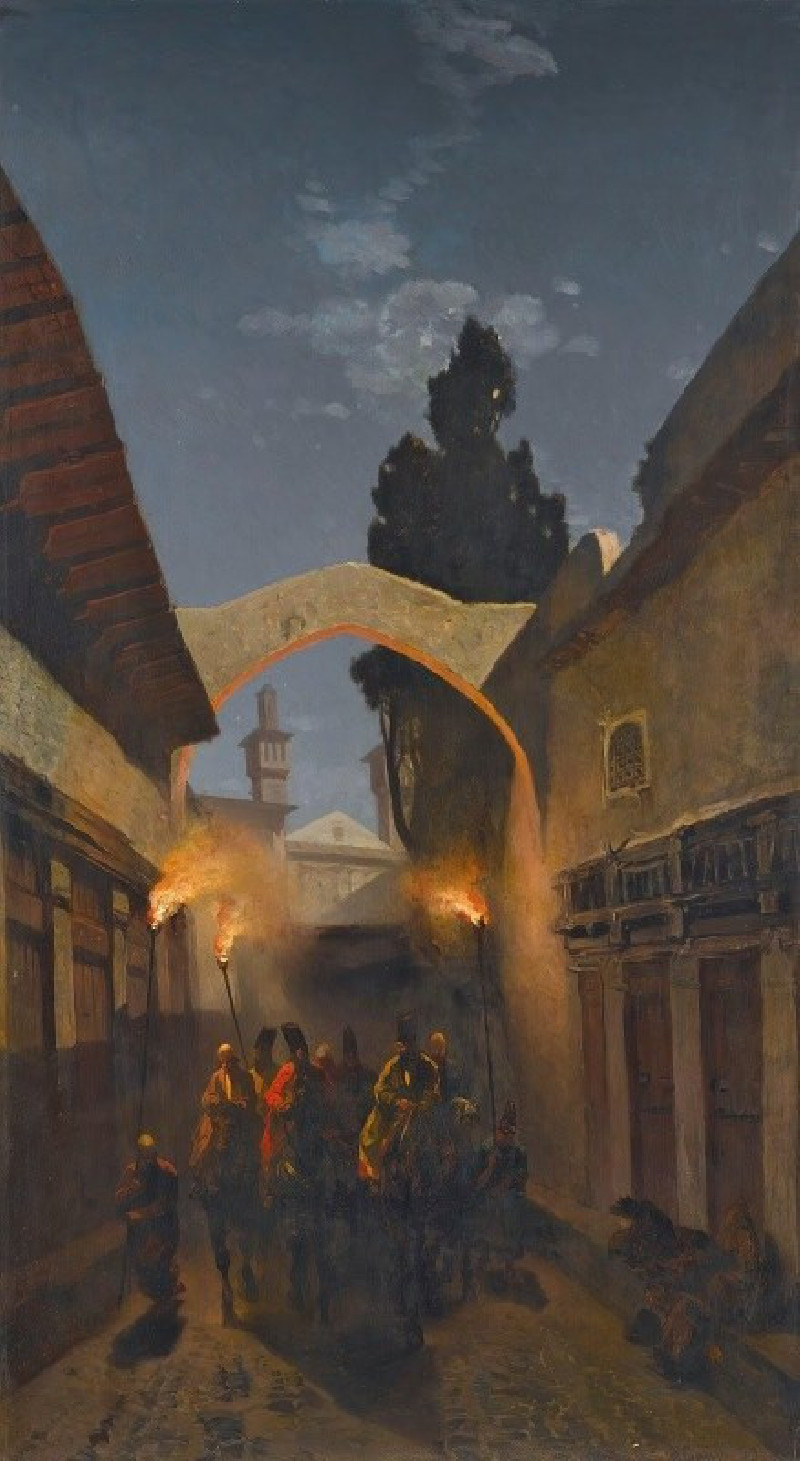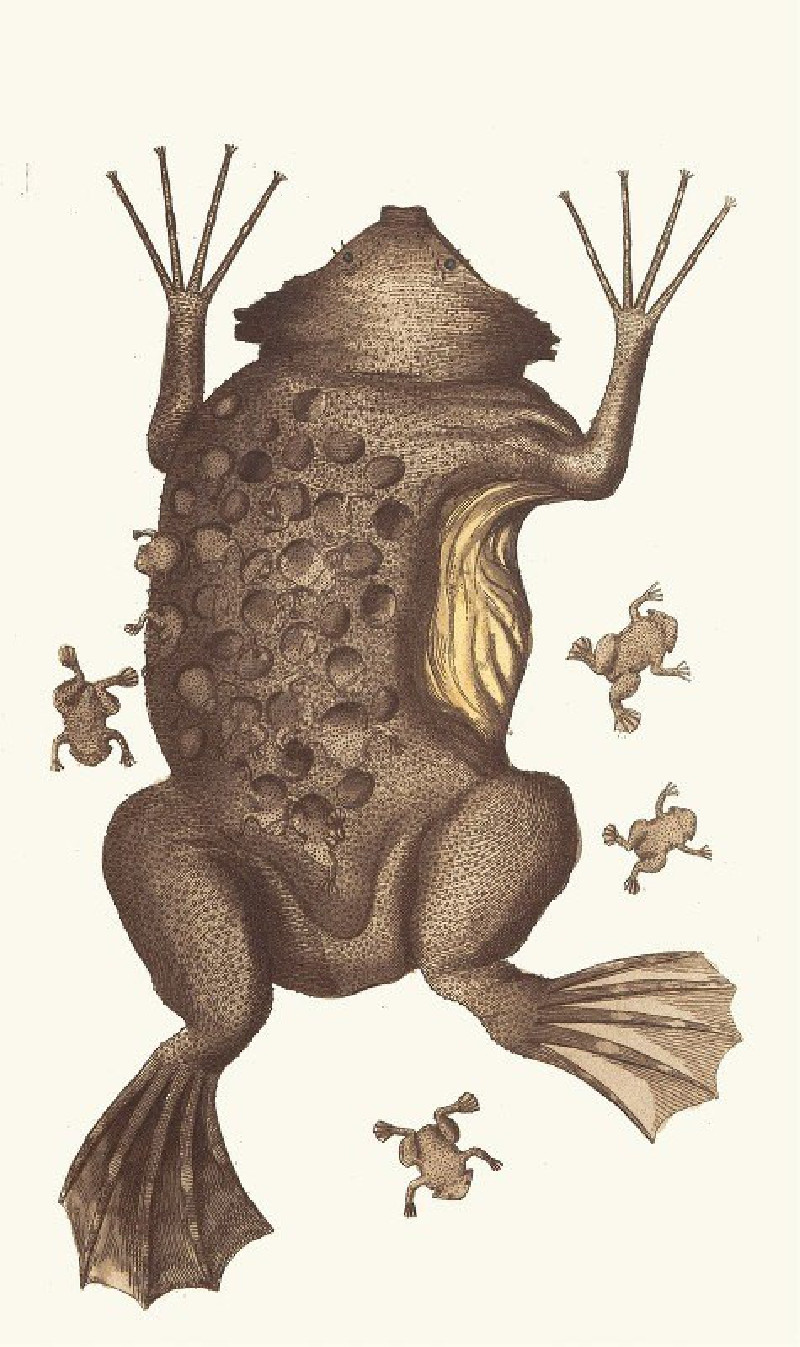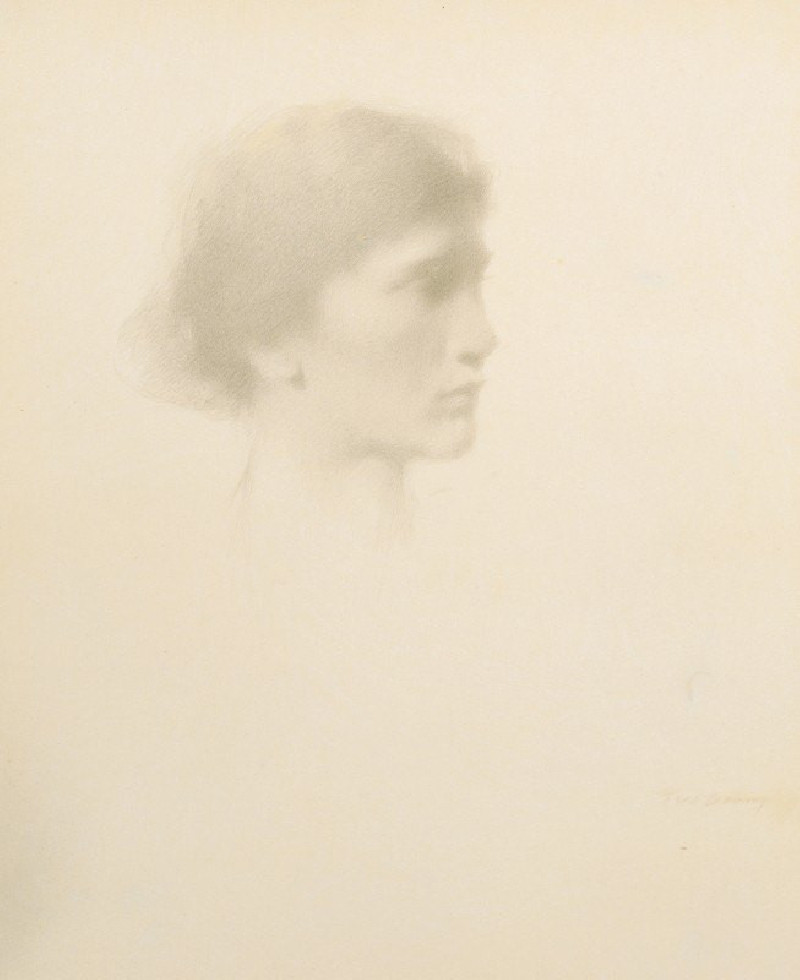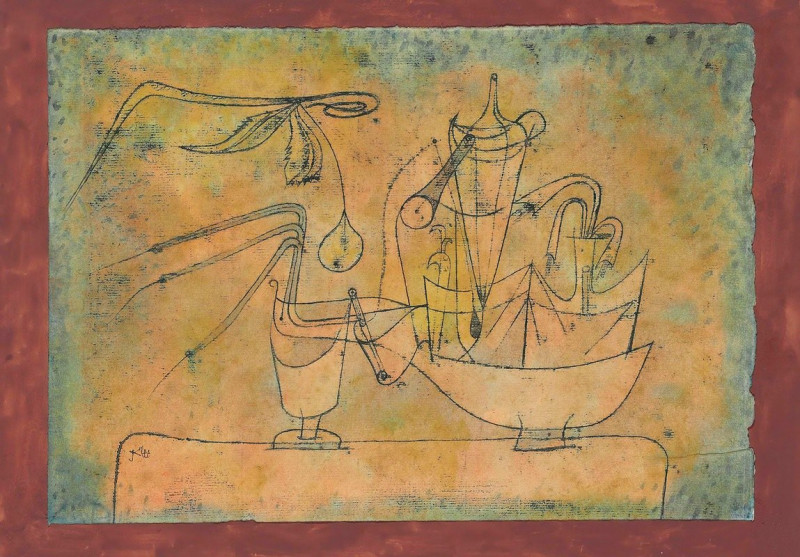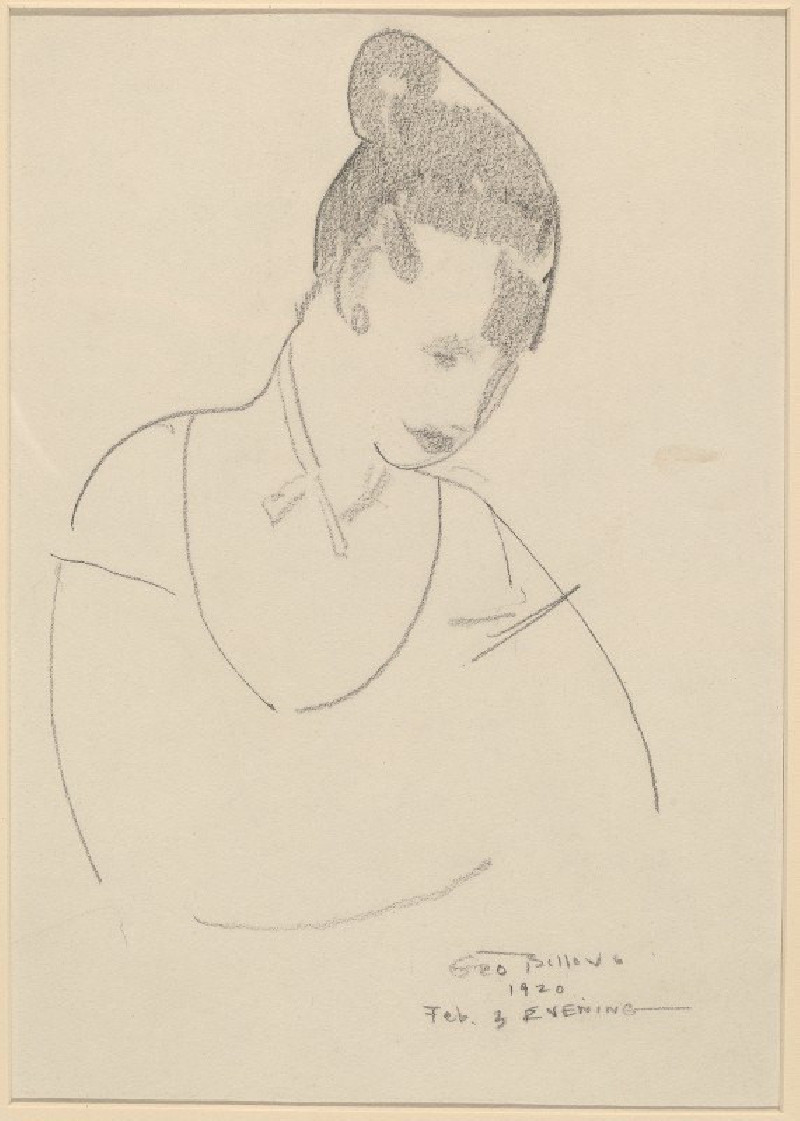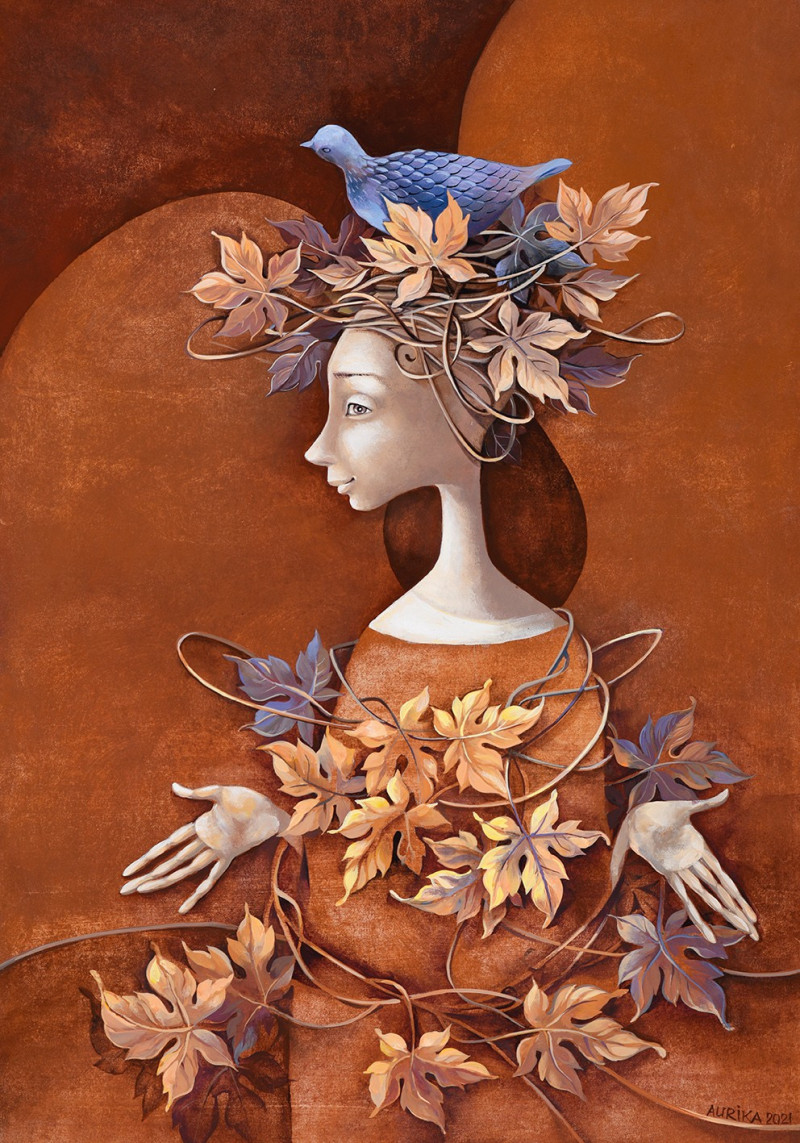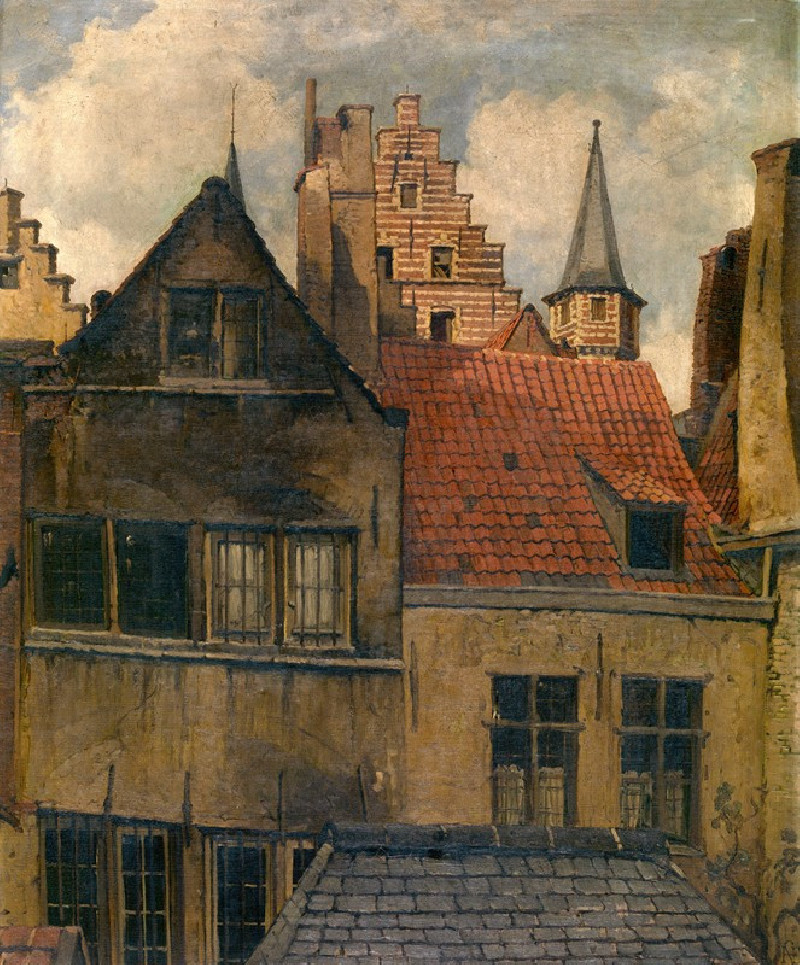Frühlingslandschaft in Tegernsee (1910)
Technique: Giclée quality print
Recommended by our customers
More about this artwork
"Frühlingslandschaft in Tegernsee," a charming depiction of a spring landscape at Tegernsee, is one of August Macke's vividly expressive works. Created in 1910, this painting showcases Macke's unique approach to color and form, elements that marked his brief but influential career within the German Expressionist movement.In this delightful piece, we see a serene view of Tegernsee, located in southern Germany. The painting is dominated by a large, lush mountain that rises majestically in the background, its surface a mix of deep blues and greens that convey the density and richness of the natural setting. In contrast to the towering mountain, the foreground features quaint rural buildings that exude a tranquil, pastoral charm. The houses are painted in simple yet picturesque whites with distinct red and gray roofing, reflecting typical German rural architecture.The landscape is alive with the fresh, vibrant greens of spring foliage, while the trees are rendered with quick, dynamic brush strokes that capture the lively essence of the season. Macke's use of color in this piece is particularly noteworthy; through an expressive palette, he succeeds in conveying not just the visual beauty of the scene, but also the refreshing and renewing atmosphere typical of spring."Frühlingslandschaft in Tegernsee" not only highlights Macke's talent for capturing the essence of a landscape but also serves as a vivid reminder of the beauty of the German countryside.
Delivery
Returns
August Macke (3 January 1887 – 26 September 1914) was a German Expressionist painter. He was one of the leading members of the German Expressionist group Der Blaue Reiter (The Blue Rider). He lived during a particularly innovative time for German art: he saw the development of the main German Expressionist movements as well as the arrival of the successive avant-garde movements which were forming in the rest of Europe. Like a true artist of his time, Macke knew how to integrate into his painting the elements of the avant-garde which most interested him.


